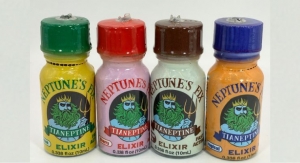Greg Doherty, Poms & Associates05.01.13
In February, the American Herbal Products Association (AHPA), Consumer Healthcare Products Association (CHPA), Council for Responsible Nutrition (CRN), Natural Products Association (NPA) and United Natural Products Alliance (UNPA) jointly presented a well-attended webinar (more than 600 participants) on Adverse Event Reports (AERs) that featured guest Dr. Daniel Fabricant, division director for dietary supplement programs at FDA.
Dr. Fabricant made a number of interesting observations. (Thanks to Loren Israelsen, executive director of UNPA, for this summary.)
There continues to be substantial under-reporting of AERs by the dietary supplement industry
The Government Accountability Office (GAO) Report on Adverse Event Reports (most recently updated in March) continues to offer an important perspective on weaknesses and lack of adequate surveillance of AERs. Senator Dick Durbin (D-IL) continues to take an active interest in this subject;
FDA is interested in chronic and acute problems that proper AER surveillance systems would reveal. In 2011 there were 2,364 AERs reported; in 2012 there were 3,249. Given the number of dietary supplement companies and individual products on the market, FDA considers these numbers low;
Only 10-20% of dietary supplement firms have reported an AER, which is strikingly low;
Good Manufacturing Practice (GMP) inspections are FDA’s window into corporate AER systems. FDA is looking for new ways to assess AER compliance other than through GMP inspections;
Companies should be aware that social media can be an observation platform for AERs. This issue was discussed at length. Do companies have a positive obligation to look for AERs through independent social media sites and to what extent should company-driven social media be monitored for AERs?
Impact on Liability Insurance
One way or another—through voluntary compliance or enforcement activities by FDA—the sheer volume of AERs across the industry is rising.
How can this trend affect your product liability insurance? The potential is significant, and not necessarily in a good way.
Examination of virtually every application for product liability insurance for dietary supplement companies reveals that there is a question similar to this (taken from an actual application): “Is the applicant aware of any fact, circumstance or situation which one might reasonably expect could give rise to a claim that would fall within the scope of the insurance being requested?”
This question is asked because product liability insurance policies for the dietary supplement industry are, almost without exception, offered on a “claims made” basis. This means that coverage is triggered when a claim is made against your company, not when the incident itself actually took place (e.g., an alleged brief but serious illness).
If a company knows about an incident that may have already occurred when it is completing the application, this question begs disclosure of that incident. Under ordinary circumstances, the insurance company will specifically exclude that incident if it should become a legitimate insured claim at a later date (otherwise the insurance company is “buying a claim,” which is not a good business decision for any insurance company).
Should you decide not to disclose a documented incident, the insurance company will surely deny the claim once it discovers (and it will) the AER was documented in the company’s files. The insurance company will allege fraud for inducing it to issue a policy based on concealed information. It will not only deny the claim, but most likely will also seek to rescind the policy in its entirety.
So in a classic example of “damned if you do, damned if you don’t” disclose an AER, how does a company work around the existence of AERs in its file? Even though experts estimate that at least 90% of all AER reports will never develop into a lawsuit against your company, can you risk the possibility that the tenth incident won’t morph into a serious insurance claim? Hardly.
Asked to comment, Justin Prochnow, an industry attorney with Greenberg Traurig’s Denver, CO-office, added, “The subject of AERs is a delicate one for companies in the supplement industry. Companies have to overcome the presumption made by many, including, at times, insurance companies, that the AER is actually due to a supplement. Of course, the mere fact that an AER was made doesn’t mean that there actually is a causal link between consumption of the supplement and the adverse event. Just because there is smoke, it doesn’t always mean there is a fire.”
In my dietary supplement insurance practice, we have successfully disclosed AERs to liability underwriters and convinced them to cover the reported AER incident should that incident evolve into an actual insurance claim down the road. This is done by specific endorsement to the policy, giving the specifics of the AER for clarity purposes. This is not easy to do as some AER reports allege severe injury or death, obviously a liability underwriter’s worst nightmare. However, as they get more educated about what AERs are—and are not—we expect to be able to continue to structure coverage for AERs even as the volume of reports increases.
Greg Doherty is a commercial insurance broker with Poms & Associates, Woodland Hills, CA. He is the Dietary Supplement Practice Leader for the firm, which specializes in the nutritional product and dietary supplement industries, including but not limited to contract manufacturers, raw materials suppliers, distributors/retailers. Mr. Doherty has four decades of experience as a broker, focusing solely on the dietary supplement industry for the last 12 years. He can be reached at gdoherty@pomsassoc.com; Website: www.gregdoherty.net.
Dr. Fabricant made a number of interesting observations. (Thanks to Loren Israelsen, executive director of UNPA, for this summary.)
Companies should be aware that social media can be an observation platform for AERs. This issue was discussed at length. Do companies have a positive obligation to look for AERs through independent social media sites and to what extent should company-driven social media be monitored for AERs?
Impact on Liability Insurance
One way or another—through voluntary compliance or enforcement activities by FDA—the sheer volume of AERs across the industry is rising.
How can this trend affect your product liability insurance? The potential is significant, and not necessarily in a good way.
Examination of virtually every application for product liability insurance for dietary supplement companies reveals that there is a question similar to this (taken from an actual application): “Is the applicant aware of any fact, circumstance or situation which one might reasonably expect could give rise to a claim that would fall within the scope of the insurance being requested?”
This question is asked because product liability insurance policies for the dietary supplement industry are, almost without exception, offered on a “claims made” basis. This means that coverage is triggered when a claim is made against your company, not when the incident itself actually took place (e.g., an alleged brief but serious illness).
If a company knows about an incident that may have already occurred when it is completing the application, this question begs disclosure of that incident. Under ordinary circumstances, the insurance company will specifically exclude that incident if it should become a legitimate insured claim at a later date (otherwise the insurance company is “buying a claim,” which is not a good business decision for any insurance company).
Should you decide not to disclose a documented incident, the insurance company will surely deny the claim once it discovers (and it will) the AER was documented in the company’s files. The insurance company will allege fraud for inducing it to issue a policy based on concealed information. It will not only deny the claim, but most likely will also seek to rescind the policy in its entirety.
So in a classic example of “damned if you do, damned if you don’t” disclose an AER, how does a company work around the existence of AERs in its file? Even though experts estimate that at least 90% of all AER reports will never develop into a lawsuit against your company, can you risk the possibility that the tenth incident won’t morph into a serious insurance claim? Hardly.
Asked to comment, Justin Prochnow, an industry attorney with Greenberg Traurig’s Denver, CO-office, added, “The subject of AERs is a delicate one for companies in the supplement industry. Companies have to overcome the presumption made by many, including, at times, insurance companies, that the AER is actually due to a supplement. Of course, the mere fact that an AER was made doesn’t mean that there actually is a causal link between consumption of the supplement and the adverse event. Just because there is smoke, it doesn’t always mean there is a fire.”
In my dietary supplement insurance practice, we have successfully disclosed AERs to liability underwriters and convinced them to cover the reported AER incident should that incident evolve into an actual insurance claim down the road. This is done by specific endorsement to the policy, giving the specifics of the AER for clarity purposes. This is not easy to do as some AER reports allege severe injury or death, obviously a liability underwriter’s worst nightmare. However, as they get more educated about what AERs are—and are not—we expect to be able to continue to structure coverage for AERs even as the volume of reports increases.
Greg Doherty is a commercial insurance broker with Poms & Associates, Woodland Hills, CA. He is the Dietary Supplement Practice Leader for the firm, which specializes in the nutritional product and dietary supplement industries, including but not limited to contract manufacturers, raw materials suppliers, distributors/retailers. Mr. Doherty has four decades of experience as a broker, focusing solely on the dietary supplement industry for the last 12 years. He can be reached at gdoherty@pomsassoc.com; Website: www.gregdoherty.net.



























